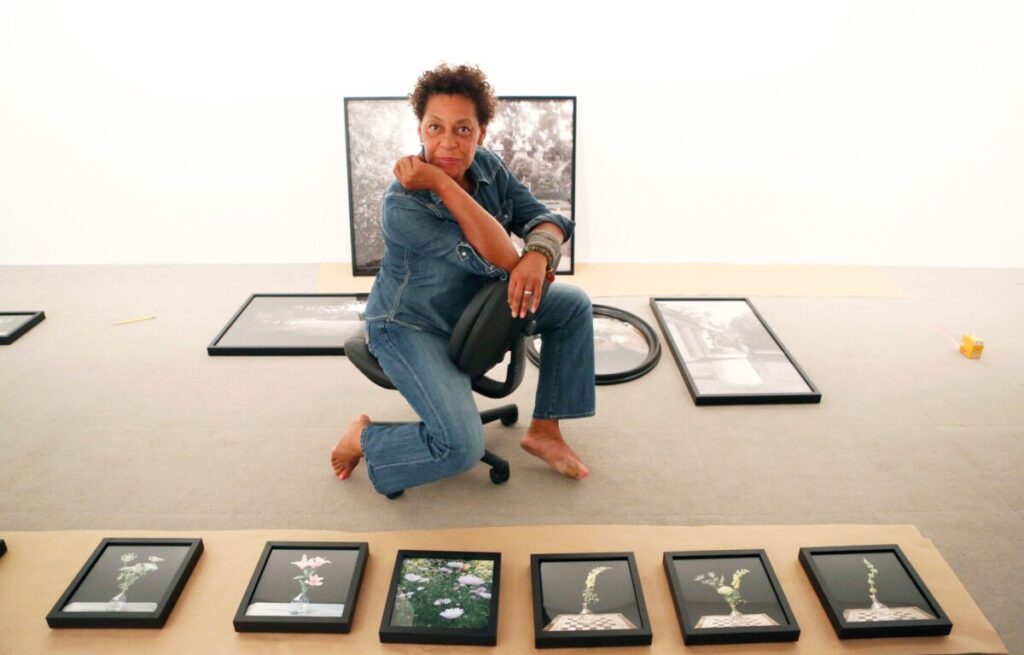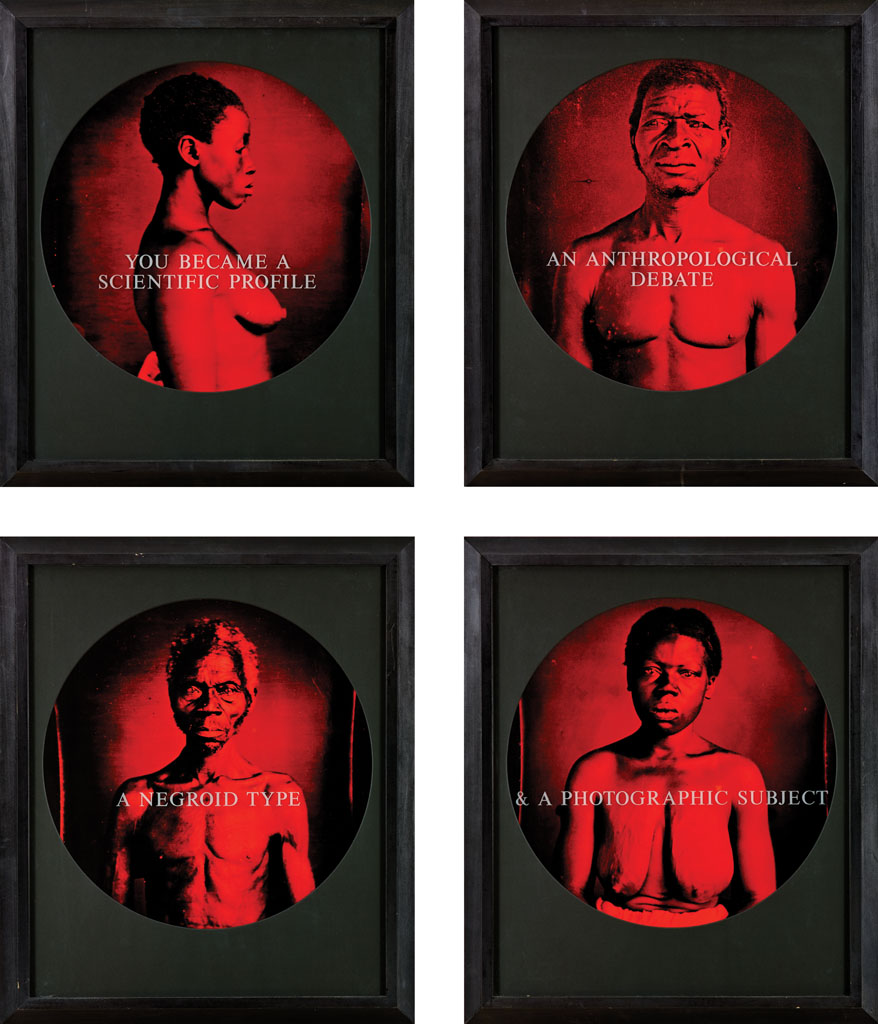I choose to write more about Carrie Mae Weems. I know she was a great artist in photography, and her “The kitchen table series”. The first time I saw those photos, that was surprising to me. In this group of photos, there are Weems who play various social roles, lover, mother, friend, and the scenes of each photo show different relationships in her daily life. The only constant is the dining table. This set of works is a voice for all women. The kitchen has belonged to women in a long history, women have been appearing in the kitchen. It’s like being unable to escape from the kitchen, making me feel the helplessness of women. This group of photos reminds me of when I was a child. I remember that there was always my mother in the kitchen, and my father was almost never seen in the kitchen. In the past, I was accustomed to this matter. “The kitchen table series” made me think a lot, it was meaningful and powerful for me. Because of this, I would like to try to know more about his work and story.

The kitchen table series, 1990
Carrie is considered to be one of the most influential artists in contemporary America. She studies and reflects cultural characteristics, sexism, class, political system, and the consequences of power in her works. Carrie Mae Weems uses her artistic power to make us think about the subject and think about our own prejudices and beliefs. I think a great artist, their works can make us think and reflect. And Carrie did it. Her works can directly face those social issues that are difficult and difficult to express, open up a way for discussion, and trigger thinking about race, gender and social class. She is black, but expressing for blacks is not her only purpose. As an artist, her focus is always on the complex and multi-dimensional human experience and situation. As shown in the kitchen table series, she is a woman, a black person, but the most important thing is a person.
Carrie Mae Weems, born on April 20, 1952 in Portland, Oregon, USA. She is an American artist. People who work with text, fabric, audio, digital images, installation and photography. And she was known for her photography. Carrie Mae Weems’s family had seven children, and she was the second child of Carrie Polk and Myrlie Weems. Weems’ parents divorced when she was 8 years old. She had her first and only child- Faith C. Weems when she was 16 years old. She joined the Marxist organization in 1972 and served as the organizer for the next 8-10 years. In 1981 she graduated with a B.A. from the California Institute of the Arts, and in 1984 she later obtained an M.F.A. from the University of California, San Diego, and in 1987 she got an M.A. from the University of California, Berkeley.
When she was 13 years old, she started contact and became interested in art. Weems first studied modern dance. Weems got her first camera in her 20s, it was given to her by her boyfriend. Because Weems was influenced by the work of early African-American photographers, who documented the experiences of black people, especially Roy DeCarava. So she began to call herself an “image maker.” Weems used her photography and film techniques to create art that challenged society’s stereotypes of black people. Early images of Weems explored personal and family themes, and were often accompanied by text and audio recordings. To date, her most famous photography series and films include “Portrait of a Woman Who has Fallen From Grace” (1987) The Kitchen Table Series” (1989-90), “From Here I Saw What Happened and I cried” (1995 -96 ), “People of a Darker Hue” (2017 ), and “Imagine if this were you” (2017 ).
And I want to talk about “From Here I Saw What Happened and I cried” (1995 -96 ). The group of works “From Here I Saw What Happened and Cried” was created between 1995 and 1996. This group of works also shocked me. Weems will also perform secondary processing on existing photos, adding his own historical thinking and understanding of photographic art. This time Weems selected some old black and white photos from historical archives, superimposed a layer of red filter on them, placed the people in the photos in the middle of the circle, covered them with glass, and engraved text on the glass surface. The text on the glass is concise and powerful, as if carved into the blood-red history. Through the operation of these technologies, I feel as if I am watching every action of the person watching the photo through a magnifying glass. However, the black people in the old photos, whether men, women or children, were once the specimens viewed by white people. White people have an unkind mentality and look at the appearance characteristics and life habits of blacks like research. This also shows how whites viewed blacks during that period. These historical photos made Carrie Mae Weems face history again, thinking about his place in history, and the position of photography art in history. Looking at these photos, I feel sad. At that time, the blacks who were not treated equally had nowhere to run, and could only endure the unkind sight of the whites. Obviously Carrie showed us a cruel history, and forgetting the reality of this cruel history is even more cruel behavior.
Carrie Mae Weems has a lot of exhibitions, awards and Publications. The prestigious Prix de Roma, The National Endowment of the Arts, The Alpert, The Anonymous was a Woman, BET Honors Visual Artist award, the Lucie Award for Fine Art photography, the Tiffany Awards and the MacArthur “Genius” grant as well as the Congressional Black Caucus Foundation’s Lifetime Achievement Award. She is represented in public and private collections around the world, including the Metropolitan Museum of Art, NY; The Museum of Fine Arts, Houston; the Museum of Modern Art, NY; Museum of Contemporary Art, Los Angeles; and The Tate Modern, London. These honors represent how powerful an artist she is.





